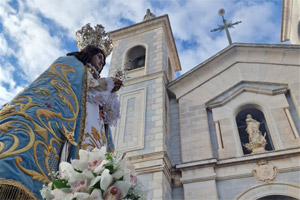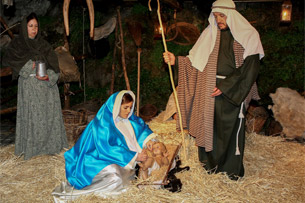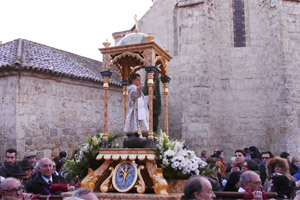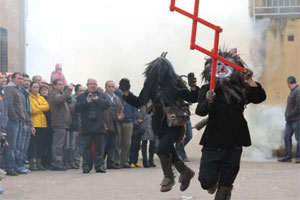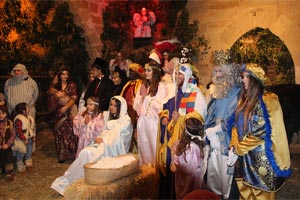Saffron Rose Festival in Consuegra
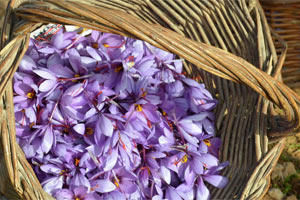
The essence of La Mancha culture is manifested in one of the best-known popular festivals in Consuegra (Toledo), which is held every year on the last weekend of October. We invite you to discover the Fiesta de la Rosa del Azafrán (Saffron Rose Festival).
What does the Fiesta de la Rosa del Azafrán consist of?
The Saffron Rose Festival is a festival held in Consuegra, a municipality in the region of La Mancha in the province of Toledo. It shows the essence of La Mancha culture: its popular traditions, crafts and gastronomy.
This festival takes place on the last weekend in October and has been declared a Festival of Regional Tourist Interest by the General Secretariat of Tourism.
The central element of the festival revolves around a legendary tradition: the cultivation of saffron in Castilla La Mancha, dating back to the period of Muslim occupation.
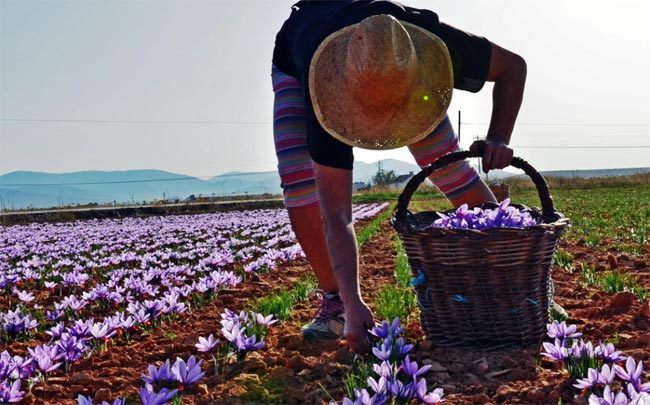
It is a spice obtained from the dried stigmas of the pistil of the Crocus sativus flower, popularly known as Saffron Rose. It provides medicinal benefits, improves digestion and helps to combat depressive states, among others.
During the celebration of this popular festival, various events are held, such as a gastronomic competition, a stigma-riding competition, the Molienda de la Paz in the Sancho mill (the central stage of the festival) and the National Folklore Festival.
How is the Fiesta de la Rosa del Azafrán celebrated?
The programme of events and activities of the Fiesta de la Rosa del Azafrán is varied, beginning with the proclamation of the Dulcinea and Maids of Honour, considered a paradigm of La Mancha women. Afterwards, the exhibitions and the fairground will be inaugurated.
Find out the details of the programme planned for the celebration of this popular festival:
Monda Competitions:
Three competitions are held (local, regional and national) related to the manual separation of saffron from the flower, known as "monda". Aspects such as speed and cleanliness on the part of the participants are taken into account. In the national competition, which takes place on Sunday, the participants wear regional costumes corresponding to their locality.
Molienda de la Paz:
It is a very symbolic and emotional event, since the windmill nicknamed "Sancho" is put into operation in a traditional way. It is considered one of the oldest and best preserved windmills in Spain.
Milling, which consists of grinding the wheat into flour, is carried out. Wheat from different places is used, symbolising equality and union between nations. Small sacks of flour are prepared and distributed to those attending this significant event.
This event is in recognition of those organisations, institutions and individuals who have contributed to the promotion of tolerance and coexistence between peoples. The Rosa del Azafrán de Consuegra choir and dance group will perform.
Gastronomic Competition:
This activity usually takes place in the Paseo de D. José Ortega y Munilla. Participants prepare typical Manchegan dishes: gachas, migas, potes, caldereta de cordero, duelos y quebrantos, el guiso de las bodas de Camacho, among other delicious recipes from Consuegra.
Folk Festival:
The Festival de Coros y Danzas starts with the parades of the groups in various parts of Consuegra culminating in the Plaza de España. Groups from Castile-La Mancha take part, as well as groups from other autonomous communities. An excellent repertoire of songs, the variety of costumes and other local peculiarities are highlighted.
At the same time, exhibitions are held, all of Consuegra's monuments are open to the public, as well as cultural events and sporting competitions.
Likewise, exhibitions of agricultural and livestock machinery are held at the fairgrounds, with fair stands with the participation of companies and craftsmen from the region, exhibiting their products to visitors.
There are also guided tours of the saffron fields, showing the process of harvesting and drying saffron, a unique experience!
Origins of the celebration of the Saffron Rose Festival
The Consuegra Saffron Rose Festival was held for the first time in 1963, with the aim of promoting and highlighting the values of La Mancha.
Over the years it has evolved, transforming from an agricultural and livestock event into a great celebration with a notable tourist and commercial connotation, attracting more and more foreign visitors and promoters.
Nowadays, the traditions of the locality are maintained, preserving its culture and history.
Curiosities of the Fiesta de la Rosa del Azafrán (Saffron Rose Festival)
Find out some curious and interesting facts about this popular festival:
- The saffron from the community of Castilla-La Mancha is known as "red gold" and has been classified as the best saffron in the world.
- The festive events include the presence of Dulcinea, a lady chosen from among the young women of the town.
Recommendations for visitors
If you want to make the most of these festivities, here are some recommendations and practical tips:
- Wear comfortable clothes and shoes.
- Ask for information about the Consuegra tourist guide.
What else can you see or do in the town if you go to Consuegra?
The town of Consuegra offers interesting historical and cultural places worth visiting:
- Castillo de la Muela: it is a fortress of Muslim origin built in the 10th century. Nowadays this building is in an excellent state of preservation, being considered one of the most beautiful and emblematic castles in Toledo.
- Mills of Consuegra: they were built at the beginning of the 19th century on the Cerro Calderico. They were used to grind wheat, using the power of the wind.
- Municipal Archaeological Museum: a building that shows the history of Consuegra since Neolithic times. It has a typical wooden balcony that represents the architecture of La Mancha.
- Church of the Santísimo Cristo de la Vera Cruz: Baroque style building, built in the second half of the 18th century. It includes the Museum of Christ, with samples of works of art donated by authorities and authorities to its patron saint.
- Church of Santa María la Mayor: a Mudejar architectural work from Toledo. It preserves the image of the patron saint of Consuegra, María Santísima de la Blanca. Inside you can see the remains of the first Catholic church in Consuegra, built by the Order of Malta.
Gastronomy
We invite you to try some of Consuegra's typical dishes:
- Manchego Shepherd's Migas: Manchego Shepherd's Migas is a traditional dish from the La Mancha region. It is prepared with crumbled stale bread, garlic, bacon or chorizo, olive oil, green bell pepper, and salt. The bread is soaked and fried with the oil and garlic to create a crispy exterior and a soft interior texture. The flavor stands out due to the combination of ingredients, which impart a smoky and spicy touch, thanks to the chorizo or bacon. It is served hot, and in some places, it is often accompanied by grapes or oranges for a contrast of flavors. Manchego Shepherd's Migas is a delicious, rustic, and comforting dish with an authentic taste of La Mancha's cuisine.
- Gachas: made with almond flour and fried pieces of chorizo and bacon.
- Pisto manchego: scrambled eggs with peppers, aubergine, fried tomatoes and courgette, served in a clay dish with a fried egg.
- Asadillo manchego: roasted red pepper and then fried with tomato and garlic, abundant cumin is added and topped with boiled egg and strips of ventresca (tuna belly).
- Duelos y quebrantos: a stir-fried dish of bacon, chorizo and bacon with plenty of egg.
- Rin-ran manchego: prepared with cod, potatoes and peppers.
- Guiso de las bodas de Camacho: delicious chicken stew prepared with red and green bell peppers, breadcrumbs and toasted slivered almonds.
- Sopa castellana: traditional soup prepared with garlic, bread and eggs.
Share photos, videos and interesting information about the Fiesta de la Rosa del Azafrán in Consuegra. Use the hashtags #Rosadelazafran #consuegra

